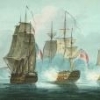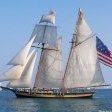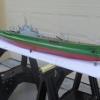Supplies of the Ship Modeler's Handbook are running out. Get your copy NOW before they are gone! Click on photo to order.
×
-
Posts
7,001 -
Joined
-
Last visited
Reputation Activity
-
 Kevin reacted to ChrisLBren in USF Confederacy by ChrisLBren - FINISHED - 3/16 Scale
Kevin reacted to ChrisLBren in USF Confederacy by ChrisLBren - FINISHED - 3/16 Scale
I'm still working and not just daydreaming about my next project. Chesstree installed - bit of glare as the tung oil dries - hoping to tackle the fenders and ladders next
-
 Kevin reacted to ChrisLBren in USF Confederacy by ChrisLBren - FINISHED - 3/16 Scale
Kevin reacted to ChrisLBren in USF Confederacy by ChrisLBren - FINISHED - 3/16 Scale
Rail construction continues… And everything is lining up - unbelievable !!!
-
 Kevin reacted to ChrisLBren in USF Confederacy by ChrisLBren - FINISHED - 3/16 Scale
Kevin reacted to ChrisLBren in USF Confederacy by ChrisLBren - FINISHED - 3/16 Scale
Not perfect - but the cheeks are carved and installed...
-
 Kevin reacted to rfolsom in Cutty Sark by rfolsom - Billing Boats
Kevin reacted to rfolsom in Cutty Sark by rfolsom - Billing Boats
Outside curve of the stern topgallent rail has been cut and sanded to shape. I am very satisfied how it follows the curve of the hull. Now I just have to get the courage up to cut out the inside curve, and hope my structure is strong enough to survive the cutting process...
Out comes a new #11 blade...
-
 Kevin reacted to mtaylor in Licorne 1755 by mtaylor - 3/16" scale - French Frigate - from Hahn plans - Version 2.0 - TERMINATED
Kevin reacted to mtaylor in Licorne 1755 by mtaylor - 3/16" scale - French Frigate - from Hahn plans - Version 2.0 - TERMINATED
Still slogging away in the shipyard... aft half-frames are still a work in progress.
However, I've been doing research and discovered via some very nice PM's with Mr. Delacroix that I have errors... and Hahn also.... other than the framing.
1) I've had to correct the history on the first page of this log. This vessel was never known as "Unicorn" while in the RN service but as "HMS Licorne". It was sold out in 1783.
2) From Hahn's article, he was advised to use the Le Venus information for rigging and certain other bits and pieces. I've been advised to use La Belle-Poule for rigging and best practices as it is closer in time and more correct. I've placed an order for the monograph from ANCRE and eagerly await it's arrival.
3) The breeching rings on the bulward should be through bolts with washers and forelocks on the outside of the hull.
4) What I thought was an air port between gunports 11 and 12 is actually a window/light port. It will be glazed.
5) Referencing port lids: In the French Navy frigates have no port-lids to their port. They are eventually closed by false port-lids in bad weather, simple square panel of light wood pierced for the passage of the gun. Nothing in common with the real port-lids. It was not until the early nineteenth century to observe French frigates with port-lids.
I am indebted to Mr. Delacroix for this information.
So.. back to cutting and gluing frames for now.
-
 Kevin got a reaction from egkb in Naval History On This Day, Any Nation
Kevin got a reaction from egkb in Naval History On This Day, Any Nation
The construction of HMS Victory begins
JUL 23rd, 1759 - Richard Cavendish recounts the birth of a great warship The keel of the most famous ship in the history of the Royal Navy was laid down in the Old Single Dock (now the Victory Dock) at Chatham Dockyard in Kent. Present with Admiralty officials at the occasion was William Pitt the Elder, whose government had announced a major ship-building programme of first-rate ships of the line and frigates the year before.
The new first-rate was designed by the Surveyor of the Navy, Sir Thomas Slade. Her keel was to be 259 ft long, she would have a displacement of 2,162 tons, carry a crew of about 850 and be armed with more than 100 guns. Some 6,000 trees would be used to build her, the great bulk of which were oaks, mainly from Kent, the New Forest and Germany. She was the Navy’s sixth Victory. One of them, under Sir John Hawkins, had fought the Spanish Armada in 1588. Another, of 80 guns, had been launched in 1666 and the fifth, launched in 1737, had sunk with all hands in 1744.
-
 Kevin reacted to Alex M in HMS Sphynx 1775 by Alex M - Scale 1/48 - English 20-Gun Frigate
Kevin reacted to Alex M in HMS Sphynx 1775 by Alex M - Scale 1/48 - English 20-Gun Frigate
Thank you Mark and John,
have worked further, and finished the bulkhead.
Alex
-
 Kevin reacted to augie in USF Confederacy by Augie & Moonbug - FINISHED - Model Shipways - 1:64
Kevin reacted to augie in USF Confederacy by Augie & Moonbug - FINISHED - Model Shipways - 1:64
After considering several methods of creating the Great Cabin floor, I decided to use Chuck's method. In my experience, doing so is never a bad idea!
The floor will be made from walnut and boxwood 3/16 x 1/32" strips. A paper template of the area to be covered was made and a piece of 6 x 6 x 1/32" plywood was used as the base. First, the strips were cut to approximate length and glued to the plywood base:
The curvature you see is created by the camera. Next, a jig was made in order to create 3/16" strips to be cut with an Exacto blade:
The individual strips were then cut:
The strips were offset and then edge glued together to create the pattern:
The paper pattern was then used to cut and sand the floor for a tight fit. Here's what we got:
Finally, just some overall shots. The floor was finished with natural stain, WOP for protection and Dullcoat to give a flat finish:
Although most of the floor will be covered by the (open) upper decking and deck beams, I think we have a nice overall detail. I'm pleased
Will be closing the shop for the upcoming Holiday festivities (Happy Independence Day to all of my fellow Americans). When we return, the strains of DECK PLANKING music will be heard in the Rockies.
Oh, we have just passed 600 hours into the build.
-
 Kevin reacted to EdT in Young America 1853 by EdT - FINISHED - extreme clipper
Kevin reacted to EdT in Young America 1853 by EdT - FINISHED - extreme clipper
Young America - extreme clipper 1853
Part 55 – More hold work
The plan has been to finish all of the work in the lower part of the hold so finish can be applied to this area before moving upward to work on the lower deck. The first picture shows the main mast step and the water tank base.
The members to support the off-center beam pillars are being positioned in this picture using a straightedge. In the next picture they have been glued down.
This picture also shows the addition of one last 6” wide strake of planking to bring the width of the limber channel down to the required 10”. In this picture a few limber boards have just been glued over that final channel – hence the wet spot. The pins on the opposite side are holding the last plank on that side.
The next picture shows some more limber boards in place plus a pile to one side. The ceiling planking and other structures have just received one coat of beeswax-turpentine finish.
When dry, the shade of this finish will be about halfway between the two shades in this picture. Surfaces that will receive glue later have not been coated.
The next picture shows some work on the Mizzen step.
The chunk of pear being marked will be cut to the shape of the knee and then slit into two to fashion the forward knees. The aft knees are roughly fit at this stage. In the next picture the mizzen step is almost finished.
Bolts have been installed down through the frames with epoxy. These will have to be filed off and the assembly finish sanded. The bolts will then be blackened to represent iron.
The last picture shows the current status.
With the ceiling planking darkened the contrast with the bilge strakes above is clearer. This shows the convergence of the heavy bilge strakes forward to butt into the bottom of the lower deck clamp. In this configuration the heavy band acts like a girder to reduce hogging strains.
It will soon be time to start work on the lower deck framing.
Ed
-
 Kevin reacted to Patrick Haw in HMS Victory by Patrick Haw - Caldercraft - Scale 1/72
Kevin reacted to Patrick Haw in HMS Victory by Patrick Haw - Caldercraft - Scale 1/72
Time for an update. In between doing other (non-Victory) things I've been working on the beakhead bulk head and building the quarterdeck guns. Finished with the beakhead bulkhead I think...perhaps some touching up to do. Fairly pleased with the result. You'll notice that my roundhouses don't have the ports in them yet. I painted and then glazed the ports with Micro Glaze and as I was going to fit one of them it made a desperate escape attempt and launched itself from the work bench, never to be seen again...well not yet anyway. I'm still looking for it!
Patrick
-
 Kevin reacted to Patrick Haw in HMS Victory by Patrick Haw - Caldercraft - Scale 1/72
Kevin reacted to Patrick Haw in HMS Victory by Patrick Haw - Caldercraft - Scale 1/72
In between re-decorating a bedroom and waiting for my new companionway ladder to be deivered I've had some time to keep moving ahead on my build. Finished the beakhead capping assembly and am now building the roundhouses and hopefully will get the beakhead decked and finished in the next couple of days. So here are some pictures, the quarterdeck screen, wheel, and ninnacle or just dry fitted right now.
Patrick
-
 Kevin reacted to Patrick Haw in HMS Victory by Patrick Haw - Caldercraft - Scale 1/72
Kevin reacted to Patrick Haw in HMS Victory by Patrick Haw - Caldercraft - Scale 1/72
Quarter deck pin rails, shot garlands, kevels and staghorns installed. Need a bit of paint touch up but I'm happy. Quarter deck screen and binnacle are dry fitted. The shot garlands required 62 cannon balls, I had 63. Dropped two of them amd spent half an hour on my knees to find one. Got it! I decided to paint the shot garlands yellow instead of black as I think it highlights the cannon balls better.
Patrick
-
 Kevin got a reaction from flying_dutchman2 in Naval History On This Day, Any Nation
Kevin got a reaction from flying_dutchman2 in Naval History On This Day, Any Nation
The construction of HMS Victory begins
JUL 23rd, 1759 - Richard Cavendish recounts the birth of a great warship The keel of the most famous ship in the history of the Royal Navy was laid down in the Old Single Dock (now the Victory Dock) at Chatham Dockyard in Kent. Present with Admiralty officials at the occasion was William Pitt the Elder, whose government had announced a major ship-building programme of first-rate ships of the line and frigates the year before.
The new first-rate was designed by the Surveyor of the Navy, Sir Thomas Slade. Her keel was to be 259 ft long, she would have a displacement of 2,162 tons, carry a crew of about 850 and be armed with more than 100 guns. Some 6,000 trees would be used to build her, the great bulk of which were oaks, mainly from Kent, the New Forest and Germany. She was the Navy’s sixth Victory. One of them, under Sir John Hawkins, had fought the Spanish Armada in 1588. Another, of 80 guns, had been launched in 1666 and the fifth, launched in 1737, had sunk with all hands in 1744.
-
 Kevin got a reaction from algeciras1801 in Naval History On This Day, Any Nation
Kevin got a reaction from algeciras1801 in Naval History On This Day, Any Nation
The construction of HMS Victory begins
JUL 23rd, 1759 - Richard Cavendish recounts the birth of a great warship The keel of the most famous ship in the history of the Royal Navy was laid down in the Old Single Dock (now the Victory Dock) at Chatham Dockyard in Kent. Present with Admiralty officials at the occasion was William Pitt the Elder, whose government had announced a major ship-building programme of first-rate ships of the line and frigates the year before.
The new first-rate was designed by the Surveyor of the Navy, Sir Thomas Slade. Her keel was to be 259 ft long, she would have a displacement of 2,162 tons, carry a crew of about 850 and be armed with more than 100 guns. Some 6,000 trees would be used to build her, the great bulk of which were oaks, mainly from Kent, the New Forest and Germany. She was the Navy’s sixth Victory. One of them, under Sir John Hawkins, had fought the Spanish Armada in 1588. Another, of 80 guns, had been launched in 1666 and the fifth, launched in 1737, had sunk with all hands in 1744.
-
 Kevin reacted to Shipyard sid in HMS Victory by Shipyard sid - FINISHED - Caldercraft
Kevin reacted to Shipyard sid in HMS Victory by Shipyard sid - FINISHED - Caldercraft
Greetings all
Thanks everybody for viewing and all your comments which are appreciated . And it is really good to see you back with your cracking build Kevin . Well not a lot has been done over the last week or so. I have added the last anchor on the port side, and finished the launch which still needs it's oars and anchor, and it will be staying on the port davit. The launch looks a lot better than the barge on the davit , although neither of them should be there. Then the final anchor also needs to be fitted on the starboard side, and then more breakages to repair including the pointy end for the third or fourth time. Ok here's a few photos of a bit of progress. DAVID
-
 Kevin got a reaction from davyboy in Naval History On This Day, Any Nation
Kevin got a reaction from davyboy in Naval History On This Day, Any Nation
The construction of HMS Victory begins
JUL 23rd, 1759 - Richard Cavendish recounts the birth of a great warship The keel of the most famous ship in the history of the Royal Navy was laid down in the Old Single Dock (now the Victory Dock) at Chatham Dockyard in Kent. Present with Admiralty officials at the occasion was William Pitt the Elder, whose government had announced a major ship-building programme of first-rate ships of the line and frigates the year before.
The new first-rate was designed by the Surveyor of the Navy, Sir Thomas Slade. Her keel was to be 259 ft long, she would have a displacement of 2,162 tons, carry a crew of about 850 and be armed with more than 100 guns. Some 6,000 trees would be used to build her, the great bulk of which were oaks, mainly from Kent, the New Forest and Germany. She was the Navy’s sixth Victory. One of them, under Sir John Hawkins, had fought the Spanish Armada in 1588. Another, of 80 guns, had been launched in 1666 and the fifth, launched in 1737, had sunk with all hands in 1744.
-
 Kevin reacted to jack.aubrey in Le Soleil Royal by jack.aubrey - FINISHED - De Agostini - Scale 1:70
Kevin reacted to jack.aubrey in Le Soleil Royal by jack.aubrey - FINISHED - De Agostini - Scale 1:70
Monday, July 14th, 2014
. . new pictures coming . . included a positioning simulation of some quarterdeck guns . . the spare parts of the guns are 80% ready. Bye, Jack.
01 CAM00253.jpg
02 CAM00254.jpg
03 CAM00255.jpg
03 CAM00256.jpg
-
 Kevin reacted to jack.aubrey in Le Soleil Royal by jack.aubrey - FINISHED - De Agostini - Scale 1:70
Kevin reacted to jack.aubrey in Le Soleil Royal by jack.aubrey - FINISHED - De Agostini - Scale 1:70
. . other pictures coming . . cheers, Jack.
01 P1090871.jpg
02 P1090872.jpg
03 P1090873.jpg
04 P1090861.jpg
05 P1090862.jpg
-
 Kevin reacted to jack.aubrey in Le Soleil Royal by jack.aubrey - FINISHED - De Agostini - Scale 1:70
Kevin reacted to jack.aubrey in Le Soleil Royal by jack.aubrey - FINISHED - De Agostini - Scale 1:70
Friday, July 11th, 2014
Having nothing new to show, while I'm preparing the single elements needed to install the guns on the deck, I propose you new images of the model . . be patient.
01 P1090865.jpg
02 P1090867.jpg
03 P1090868.jpg
04 P1090869.jpg
05 P1090870.jpg
Regards, Jack
Post Scriptum: thanks to all for the positive comments.
-
 Kevin reacted to jack.aubrey in Le Soleil Royal by jack.aubrey - FINISHED - De Agostini - Scale 1:70
Kevin reacted to jack.aubrey in Le Soleil Royal by jack.aubrey - FINISHED - De Agostini - Scale 1:70
. . continuation, let's turn to the overall views.
Now I'm approaching an less presentable activity: the preparation of all blocks and accessories related to the installation of the guns on the decks. I think it will take me a couple of weeks before I can have something to show you, after which there will be very little to get to the end.
Friendliness, Jack.Aubrey
01 P1090860.jpg[/img][/url]
02 P1090859.jpg[/img][/url]
03 P1090856.jpg[/img][/url]
04 P1090857.jpg[/img][/url]
05 P1090858.jpg[/img][/url]
-
 Kevin got a reaction from WackoWolf in Naval History On This Day, Any Nation
Kevin got a reaction from WackoWolf in Naval History On This Day, Any Nation
The construction of HMS Victory begins
JUL 23rd, 1759 - Richard Cavendish recounts the birth of a great warship The keel of the most famous ship in the history of the Royal Navy was laid down in the Old Single Dock (now the Victory Dock) at Chatham Dockyard in Kent. Present with Admiralty officials at the occasion was William Pitt the Elder, whose government had announced a major ship-building programme of first-rate ships of the line and frigates the year before.
The new first-rate was designed by the Surveyor of the Navy, Sir Thomas Slade. Her keel was to be 259 ft long, she would have a displacement of 2,162 tons, carry a crew of about 850 and be armed with more than 100 guns. Some 6,000 trees would be used to build her, the great bulk of which were oaks, mainly from Kent, the New Forest and Germany. She was the Navy’s sixth Victory. One of them, under Sir John Hawkins, had fought the Spanish Armada in 1588. Another, of 80 guns, had been launched in 1666 and the fifth, launched in 1737, had sunk with all hands in 1744.
-
 Kevin got a reaction from MEDDO in Naval History On This Day, Any Nation
Kevin got a reaction from MEDDO in Naval History On This Day, Any Nation
The construction of HMS Victory begins
JUL 23rd, 1759 - Richard Cavendish recounts the birth of a great warship The keel of the most famous ship in the history of the Royal Navy was laid down in the Old Single Dock (now the Victory Dock) at Chatham Dockyard in Kent. Present with Admiralty officials at the occasion was William Pitt the Elder, whose government had announced a major ship-building programme of first-rate ships of the line and frigates the year before.
The new first-rate was designed by the Surveyor of the Navy, Sir Thomas Slade. Her keel was to be 259 ft long, she would have a displacement of 2,162 tons, carry a crew of about 850 and be armed with more than 100 guns. Some 6,000 trees would be used to build her, the great bulk of which were oaks, mainly from Kent, the New Forest and Germany. She was the Navy’s sixth Victory. One of them, under Sir John Hawkins, had fought the Spanish Armada in 1588. Another, of 80 guns, had been launched in 1666 and the fifth, launched in 1737, had sunk with all hands in 1744.
-
 Kevin got a reaction from Piet in Hr. Ms. O 19 1938 by Piet - FINISHED - scale 1:50 - submarine of the Royal Navy Netherlands in service 1939 - 1945
Kevin got a reaction from Piet in Hr. Ms. O 19 1938 by Piet - FINISHED - scale 1:50 - submarine of the Royal Navy Netherlands in service 1939 - 1945
Piet Just caught up again, lovely work, and a fantastic build in memory of the crew of 019 and all the other submariners who gave there lives in the deep
-
 Kevin reacted to rafine in Frigate Essex by Rafine - FINISHED - Model Shipways - Kitbashed
Kevin reacted to rafine in Frigate Essex by Rafine - FINISHED - Model Shipways - Kitbashed
After some minor cursing and a small change of method, I've completed the first side of the copper. The change was to go, as much as possible, to one continuous strip of copper tape for each row, rather than piecing two or three pieces together. This took a little more care to avoid twisting the strips, but ended up taking less time and looking neater.
While I'm generally pleased with the look of this side, I have no doubt that the refinement of method, and the practice that I've had, will make the second side easier and better. I will take a day or two off from the copper, however, because I am a little bleary-eyed from looking at it for a week. Now that my Brass Black has arrived, I think that I'll do some eyebolts and ringbolts for a bit.
Bob
-
 Kevin reacted to rafine in Frigate Essex by Rafine - FINISHED - Model Shipways - Kitbashed
Kevin reacted to rafine in Frigate Essex by Rafine - FINISHED - Model Shipways - Kitbashed
Moving ahead at a faster pace caused by unusual weather (13" of rain that caused local flooding that pretty much trapped us in our house for a couple of days), the first copper has been applied to the hull.
After some experimenting , I decided to try something a little different. Rather than cutting the copper tape into individual plates, I chose to apply the tape in long strips (two or three for the length of the hull). I then burnished the strips with a piece of stripwood and then scribed in the plate division lines. The last step is to use a stamp made of a piece of wood with headless nails to simulate the plate nailing pattern. Because of the scale, I didn't attempt to to do the actual pattern, but like so many other things on the build, used a pattern that seemed to look "right". There is a slight overlap of the tape strips.
I found it very hard to take decent photos of the copper because of the glare and reflection and apologize for the quality of those attached. Now it's back to applying what seems to be an endless expanse of copper.
Bob






